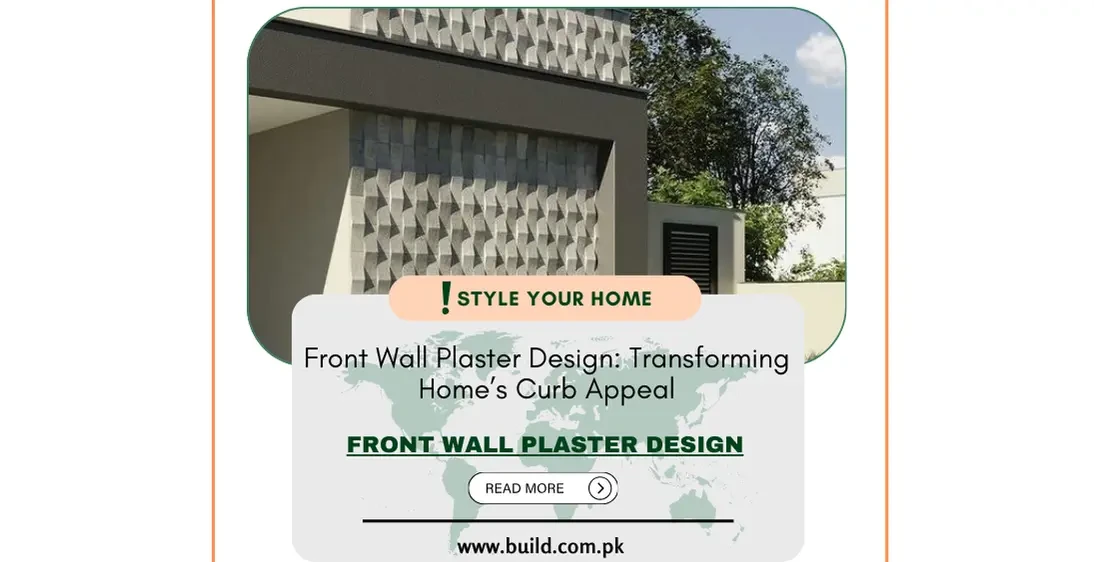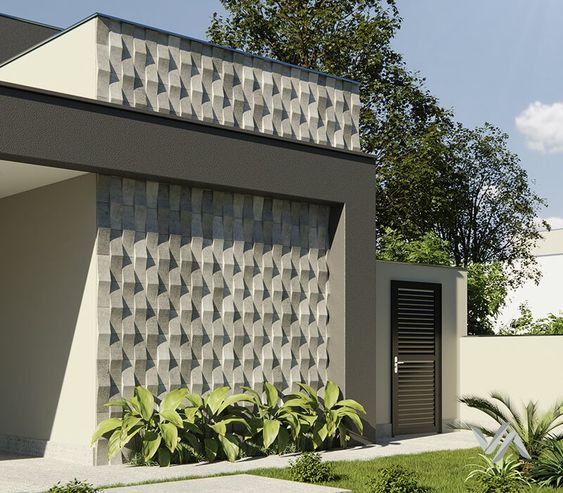Front Wall Plaster Design: Transforming Home’s Curb Appeal

Introduction:
The
front wall of your home plays a crucial role in creating a lasting first
impression. A well-designed front wall not only enhances the aesthetics of your
property but also adds value and character. Plaster designs are a popular
choice for front walls, offering versatility, durbility, and a wide range of
creative possibilities. In this comprehensive guide, we will explore various
aspects of front wall plaster design, including types, benefits, design ideas,
and maintenance tips.
Understanding Plaster Design
What is Plaster Design?
Plaster
design involves applying a decorative or protective layer of plaster to the
exterior walls of a building. Plaster can be molded into various textures and
patterns, allowing for endless design possibilities. It is a versatile material
that can be used to achieve both traditional and contemporary looks.
Types of Plaster for Exterior Walls
Cement Plaster:
Made from a mixture of cement, sand, and water, cement plaster is known for its strength and durability. Weather-resistant, long-lasting, and provides a smooth finish. Modern and traditional homes, urban environments, and areas prone to harsh weather conditions.
Lime Plaster:
Composed of lime, sand, and water, lime plaster is breathable and flexible, making it suitable for historic buildings. Eco-friendly, breathable, and has natural antibacterial properties. Restoration projects, older homes, and humid climates.
Gypsum Plaster:
Gypsum plaster is made from gypsum powder mixed with water. It sets quickly and is esy to work with. Smooth finish, easy application, and fire-resistant. Interiors and areas where quick drying is essential.
Acrylic Plaster:
A modern option, acrylic plaster contains acrylic resins, making it flexible and resistant to cracking. Highly flexible, weather-resistant, and available in various colors. Contemporary homes, exterior applications, and areas with significant temperature fluctuations.

Benefits of Plaster Design for Front Walls
Enhanced Aesthetics:
Plaster
designs can significantly enhance the visual appeal of your home’s exterior.
With various textures, patterns, and colors to choose from, you can create a
unique and eye-catching front wall that stands out.
Durability:
Plaster
provides a durable and long-lasting finish that protects your exterior walls
from weather elements, such as rain, wind, and UV rays. High-quality plaster
can withstand the test of time and maintain its appearance for years.
Versatility:
Plaster
is a highly versatile material that can be molded into various shapes and
patterns. Whether you prefer a smooth, minimalist look or an intricate,
detailed design, plaster can be customized to match your aesthetic preferences.
Insulation:
Plaster
can improve the insulation of your home by providing an additional layer of
protection against temperature fluctuations. This can help to maintain a
comfortable indoor environment and reduce energy costs.
Low Maintenance:
Once
applied, plaster requires minimal maintenance compared to other exterior
finishes. Regular cleaning and occasional touch-ups can keep your plaster
design looking fresh and new.
Design Ideas for Front Wall Plaster
Traditional Textures:
Stucco Finish:
Stucco is a popular plaster finish that creates a textured, rough appearance.
It is commonly used in Mediterranean and Spanish-style homes.
Choose earthy tones like beige, terracotta, or ochre to enhance the
traditional look. Complement with wrought iron accents and terracotta roof
tiles.
Pebbledash Finish:
Pebbledash involves embedding small pebbles or gravel into a wet plaster
surface, creating a rough, textured finish.
Opt for natural-colored pebbles to achieve a rustic look. Pair with
wooden doors and window frames for a cohesive design.
Modern Patterns:
Smooth Finish:
A smooth plaster finish provides a clean, sleek appearance that is perfect for
modern homes.
Use bold colors like white, grey, or black for a contemporary look.
Accentuate with metal or glas elements for added sophistication.
Geometric Patterns:
Geometric patterns add a dynamic and artistic element to your front wall. This
can be achieved through careful application of plaster in straight lines or
angular shapes.
Consider contrasting colors to highlight the geometric design. Use
lighting to create shadows and depth, enhancing the overall effect.
Creative Embellishments
Relief sculptures:
Relief sculptures involve carving or molding designs into the plaster surface,
creating a three-dimensional effect.
Choose motifs that reflect your personal style or cultural heritage. Use
subtle colors to emphasize the intricate details.
Mosaic Inlays:
Incorporate mosaic tiles into your plaster design to add color and texture.
This technique is often used to create decorative borders or focal points.
Select vibrant mosaic tiles that contrast with the plaster color. Use
this technique sparingly to avoid overwhelming the design.
Application Process
Preparation:
Inspect the wall surface for any cracks, holes, or damage. Repair any issues before applying the plaster. Clean the wall thoroughly to remove dirt, dust, and loose materials. This ensures better adhesion of the plaster. Apply a primer to the wall if necessary. Priming helps the plaster to adhere better and creates a more uniform finish.
Application:
Prepare the plaster mixture according to the manufacturer’s instructions. Ensure the consistency is suitable for the type of finish you want to achieve. Apply a base coat of plaster to the wall using a trowel or spray gun. This layer should be smooth and even. Depending on the desired design, use appropriate tools (e.g., brushes, sponges, trowels) to create textures or patterns while the plaster is still wet. Allow the plaster to cure completely. The curing time will depend on the type of plaster and environmental conditions.
Finishing Touches:
Once the plaster is fully cured, you can paint it with your chosen color. Use high-quality exterior paint to ensure longevity and durability. Apply a sealant to protect the plaster from moisture and UV damage. This step is especially important for exterior applications.
Maintenance Tips:
Clean your plastered front wall periodically to remove dirt and prevent mold growth. Use mild soap and water, and avoid abrasive cleaning tools. Regularly inspect the plaster for any signs of cracks or damage. Promptly repair any issues to prevent further deterioration. Repaint the plaster every few years to maintain its appearance and protect it from the elements. Plaster can be susceptible to damage from heavy impacts. Be mindful of activities near the wall that culd cause damage.
Conclusion:
Front wall plaster design is an excellent way to enhance the curb appeal of your home. With various types of plaster, design options, and benefits, you can create a unique and attractive front wall that reflects your personal style. By following the proper application process and maintenance tips, you can ensure that your plaster design remains beautiful and durable for years to come. Investing in a well-designed plaster front wall not only adds aesthetic value but also provides long-lasting protection for your home.









